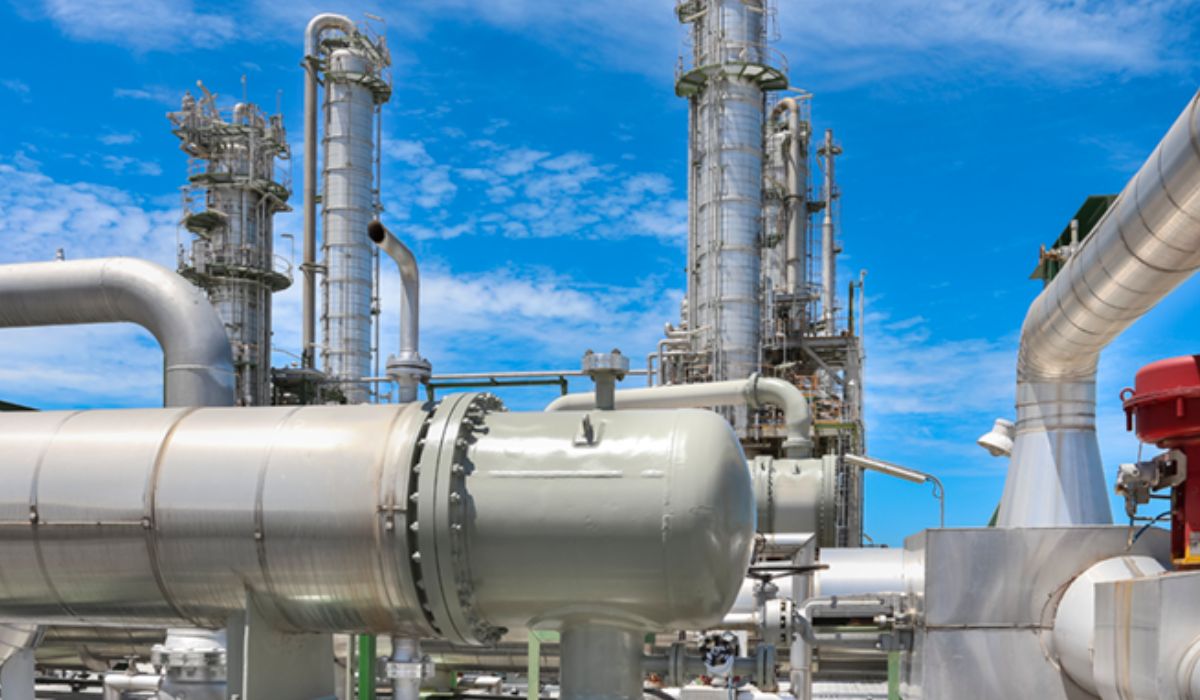The purpose of a heat exchanger is to allow for the transfer of heat between two fluids without any physical contact between them. They feature a conductive substance separating two channels, one for each of the hot and cold fluids. This substance acts as a heat conductor, allowing for effective thermal exchange.
The Importance of Heat Exchangers
Heat exchangers play a crucial role in many manufacturing procedures because of its ability to conserve resources, lower operating costs, and keep temperatures stable. They make heat recovery easier, which is important for environmentally friendly processes in many different fields of work.
How Heat Exchangers Work
The movement of hot and cold fluids down their respective channels is essential to the heat exchanger’s functioning. The temperature of each fluid is maintained via the transfer of heat from the warmer to the cooler one. The effectiveness of heat transfer is dependent on the design and flow patterns used.
Types of Heat Exchangers
Shell and Tube Heat Exchangers
Most heat exchangers are of the shell and tube variety, which has several uses. The tubes inside the shell facilitate rapid and efficient heat transfer between the various media.
Plate Heat Exchangers
The plates in a plate heat exchanger are corrugated to produce a large surface area for the transfer of heat. They are widely utilized in HVAC and refrigeration systems due to their small size and high efficiency.
Finned Tube Heat Exchangers
The fins on a finned tube heat exchanger make the tube’s surface area more conducive to heat transmission. When installation space is at a premium, these heat exchangers shine.
Double Pipe Heat Exchangers
The hot and cold fluids in a double-pipe heat exchanger circulate in separate, but concentric, pipes. They are simple in construction and work well under low pressure.
Spiral Heat Exchangers
Spiral heat exchangers are compact and efficient in transferring heat because to their special design, which consists of two flat, spiral channels.
Heat Exchanger Efficiency
Factors Influencing Efficiency
Design, flow rates, temperature variations, and fluid characteristics are only few of the elements that might impact heat exchanger efficiency. To achieve optimal performance, the heat exchanger must be correctly sized and selected.
Enhancing Heat Exchanger Performance
Regular maintenance, cleaning, and the use of high-quality materials are essential for optimal heat exchanger operation. In addition, cutting-edge computer methods can enhance their form.
Maintenance and Care
Fouling, corrosion, and scaling can lower the heat exchanger’s efficiency, therefore routine maintenance is essential. To maintain peak efficiency, regular cleaning and checks are required.
Applications of Heat Exchangers
HVAC Systems: A building’s heating, cooling, and ventilation systems would not function without heat exchangers. They effectively control indoor temperatures, which helps save utility bills.
Refrigeration: Heat exchangers aid in the cooling process in refrigeration systems by blocking the circulation of warm air and allowing the cold air to remain within.
Chemical Processing: The chemical processing industry relies heavily on heat exchangers for temperature regulation throughout a wide range of reactions and separations.
Power Generation: The effective production of electricity relies on heat exchangers, which move heat from steam to water in power plants.
Gas and Oil Production: Heat exchangers are essential in the oil and gas industry for a variety of activities, including heat recovery, refining, and liquefying natural gas.
Heat Exchangers in Everyday Life
Heat Exchangers in Everyday Life: Heat recovery ventilation systems with heat exchangers are commonly used in commercial and residential buildings to enhance indoor air quality and reduce energy consumption.
Water Heaters: Water heaters rely on heat exchangers to transfer heat efficiently, allowing for the delivery of hot water for a variety of uses.
Air Conditioning Units: Heat exchangers allow the air conditioning system to more efficiently transfer heat, resulting in cooler indoor air.
Car Radiators: Cars include heat exchangers in radiators to get rid of the engine’s surplus heat and keep it running smoothly.
Emerging Trends in Heat Exchanger Technology
Micro Heat Exchangers: Thanks to technological advances in microfabrication, small and efficient micro heat exchangers are now commercially available.
Compact Heat Exchangers: Because of their reduced size, lower weight, and higher efficiency, compact heat exchangers are frequently used in situations where more space is not available.
Eco-Friendly Heat Exchangers: Heat exchangers that employ sustainable materials and have a less carbon footprint are becoming increasingly popular in the industry.
Additive Manufacturing in Heat Exchangers:Heat exchangers can now have better performance thanks to additive manufacturing’s ability to create intricate designs.
Conclusion
When it comes to the effective transfer of thermal energy, heat exchangers are vital devices used in a wide range of fields. They are used in everything from household appliances to vital industrial operations, making them an integral part of green initiatives to reduce energy consumption.
FAQs
What is the purpose of a heat exchanger?
A heat exchanger is a device used to regulate temperatures by transferring heat from one fluid to another without the use of contact.
Which industries rely heavily on heat exchangers?
Heat exchangers are widely used in a variety of fields, including air conditioning and refrigeration, chemical processing, power production, and the oil and gas industries.
How can I enhance the efficiency of a heat exchanger?
Heat exchanger performance can be maximized through regular maintenance, cleaning, and the use of high-quality materials.
What are the emerging trends in heat exchanger technology?
Micro heat exchangers, compact designs, environmentally acceptable materials, and additive manufacturing are just some of the innovations shaking up the market.
What does the future hold for heat exchangers?
Integration of heat exchangers into renewable energy systems will continue, and future research will lead to advancements in heat exchanger materials and designs.











